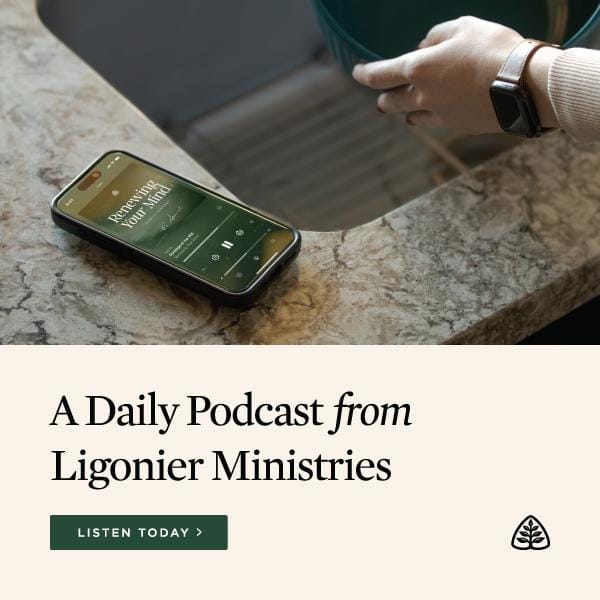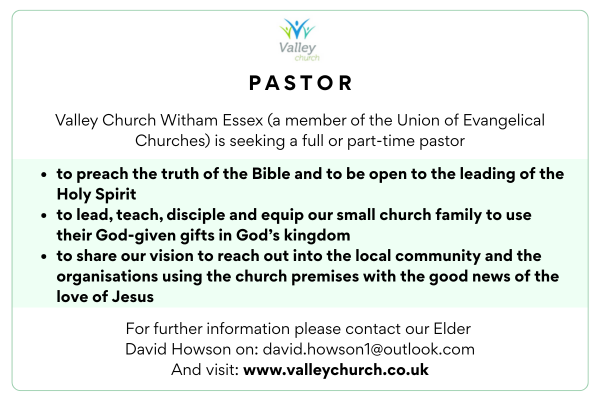‘Do you belong to that cult?’ That was the question thrown at me unexpectedly as I visited some houses in North West Wales. Before I could answer, the man continued: ‘Do you belong to those who go around with a Bible, refusing blood transfusions for their children when they are dying?’
He thought I was a Jehovah’s Witness. After explaining I was a Christian and the pastor of a church nearby, he became more relaxed. ‘The only religious people who come round these houses’, he added, ‘are Mormons and JWs. I did not expect church people to call at my house’.
I felt his words were extremely challenging. And for almost an hour we talked freely about the gospel as we drank tea together in his home.
Odd people?
But it is that word ‘cult’ again. For this man the word was associated with odd, unusual people who did ‘strange’, even ‘extreme’ things.
Now this is the word we are thinking about in this article, together with the term ‘new religious movement’ (NRM). There is need, as I explained last month, to reflect on the meaning and use of all such terms.
What do these words mean? The main problem, of course, is with the word ‘cult’. We need to unravel the word and find out how it is being used today.
Where do we start? Is the Concise Oxford Dictionary a useful starting point? Not really. A cult, it tells us, involves ‘a devotion or homage to a person or thing’ (9th Edition, p.327). The word can also refer to ‘a popular fashion especially followed by a specific section of society’.
Strong devotion to a leader and to an organisation certainly characterise a significant number of cults. But there are other features, too, which are equally important. So this definition is only partially helpful.

Embedded
The term ‘cult’ is ambiguous as well as complex. The concept is elastic too, in the sense that it is often stretched to varying degrees depending on the commentator. Should we, then, abandon this word? I think not, and for four good reasons.
One reason is that the word has become embedded in modern jargon. All kinds of people use it. I teach an undergraduate degree module on NRMs. The students come from widely different social backgrounds but they all describe it as ‘the cults course’!
Because the ordinary person on the street uses this word, it is part of modern parlance and we need to retain it.
Secondly, and related to the above point, the media consistently use the term ‘cult’. The Daily Mail, for example, has campaigned successfully against some of the more sinister cults. On radio and TV it is the word ‘cult’ that is mostly used by interviewers and contributors to describe the phenomena we are discussing.
Government use
Thirdly, the term is used in government circles. One recent example is the government’s ban preventing religious organisations from holding television broadcast licences. Ministers are apparently open to suggestions on how the restrictions can be eased.
Government concerns relate to increased choice in the digital future, the content and aims of religious broadcasting, and the danger that irresponsible groups might fuel racism. Organisations like the Universal Church of The Kingdom of God own about twenty television and fifty radio stations in Brazil (The Guardian, 22 January 2001).

Speaking on behalf of the Cult Information Network, Ian Howarth says that he does not object to ‘main-stream’ churches starting digital TV stations but feels that cults should be banned.
‘Cults, by definition, remove personal freedom’, he declared. ‘The definitions in any new legislation would have to be very tight. It is interesting that in the UK we allow cults to register as charitable institutions in the same way as religious or therapeutic organisations’.
This matter of broadcasting licences needs to be closely watched by Christians, but I am using the example here only to illustrate the point; the term ‘cult’ enters into government discussions and planning.
Common features
Fourthly, while there are many differences among cults, there are features that apply to most if not all of them. These include factors such as protest and withdrawal; a strong allegiance to leaders; and a degree of control over members that reduces (or even removes) personal freedom. When people use the term cult, they are usually referring to one or more of these features.
It is helpful, therefore, to retain the word ‘cult’. Unlike the term ‘sect’, the term ‘cult’ has a wider, less Christian, base. Consequently, it is fairly comprehensive in covering the many groups exhibiting cultic tendencies that have emerged in recent decades.
What other features do cults have in common? As we saw last month, protest is a dominant feature, whether it is expressed against major religions, a state church, and/or the secularising of society.
The element of protest is often expressed by varying degrees of withdrawal from society. For example, the Nameless Group, the Cooneyites and others, endeavour to insulate and separate themselves from society in basic ways.
One such member related to me how his childhood was unhappy on account of the strict policy of isolation from society. He felt rejected and the long-term effects were low self-esteem, paranoia, depression, anxiety and guilt coupled with fear. The sense of isolation can be overwhelming.
Allegiance
Then there is the feature of strong allegiance to a leader and organisation. Whether it is the Watchtower Society, the Branch Davidians, The Family of Love, the ‘Church of Christ’, Scien-tology or the Order of the Solar Temple, allegiance to leaders or an organisation can be both blind and total.
This has led many to conclude that cult leaders use techniques of mind control to exercise authority over members and develop in them a sense of dependence. In varying degrees, these features are found in the majority of cults.
Discerning readers may have observed a distinction I made in earlier articles between groups which are cults (that is, where all or most of these features are found to a significant degree) and those that are not cults yet exhibit some cultic features.
Even a Bible-believing church may develop cultic features such as blind allegiance to a leader and restriction of the personal freedom of members. Sometimes a church can develop into a cult, as did the Family of Love and the ‘Church of Christ’.
On the other hand, this can work in reverse when cults like Seventh Day Adventists and the Worldwide Church of God reform themselves under the Word of God, ridding themselves of most, if not all, cultic features.The WCG has changed remarkably and is now a member of the Evangelical Alliance, subscribing fully to its doctrinal basis.
New religious movements
What about NRMs? The term is less offensive; and offers more flexibility in describing the complex contemporary cult scene. However, many of the cults are not ‘new’; and those that are ‘new’ are recycling old ideas.
The word ‘movement’ is also too grand to describe many groups like the Branch Davidians and the Family of Love. Furthermore, some cults, like Scientology, are not ‘religious’ so there are difficulties with the term NRM.
The term cult, despite its weaknesses, needs to be retained and used in preference to terms like ‘sect’ and ‘NRMs’.
Differences
There are, of course, differences between cults, which vary in the degree to which they practise withdrawal, allegiance and control.
Compare, for example, the Watchtower Society with Scientology. The former claims to be Bible-based. It is ‘Adventist’ in theology, zealous proselytising, and protests strongly against Christendom, which it views as satanic and hypocritical.
Pressure is placed on members to engage in ‘ministry’, attend meetings and follow a specific lifestyle. By contrast, Scientology does not even claim to be religious. However, there have been reports of financial exploitation and mind control techniques being used on unsuspecting seekers.
In addition to the ‘withdrawal-allegiance-control’ syndrome, almost without exception, a cult will display deviations from major Bible doctrines. This leads to a distortion of the gospel. That is the greatest tragedy, for the gospel of Christ alone tells sinners how they can be reconciled to the holy God.
At the heart of this gospel is the glorious news that Jesus Christ died bearing the punishment of sinners and rose again from the dead to declare them justified (Romans 4:25).
To conceal, deny or even modify this God-given gospel is tragic, whether by cults or even mainline churches.








